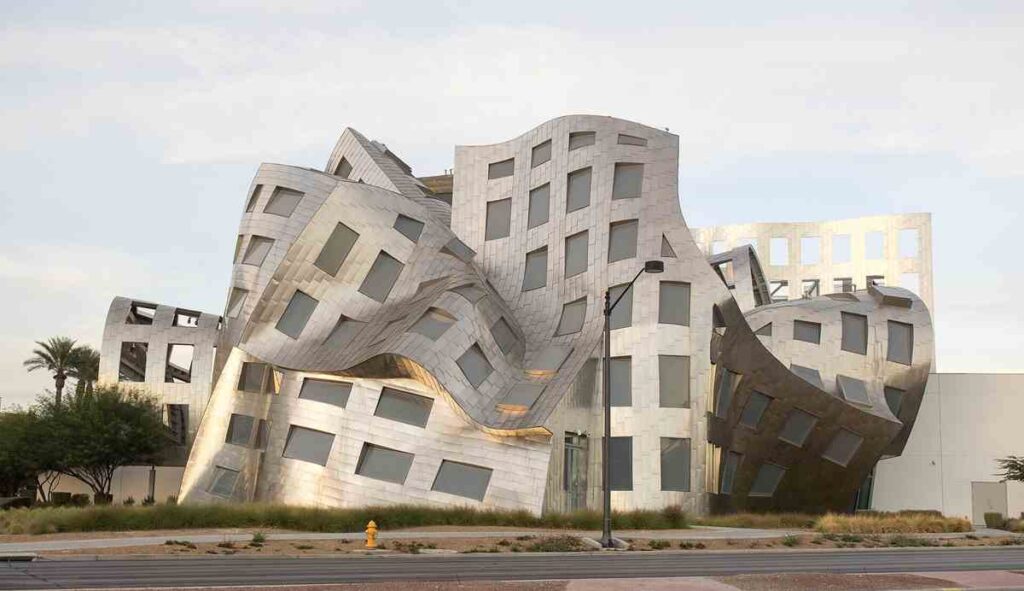Frank Owen Gehry, (born February 28, 1929) is a Canadian-born American architect and designer. His works are considered among the most important of contemporary architecture. Gehry graduated with a Bachelor of Architecture degree from the University of Southern California in 1954. In 1962, he established a practice in Los Angeles that became Gehry & Partners in 2001.
At the end of the 80’s he began receiving larger national and international commissions, including his first European commission, the Vitra Museum in Germany (1989). It was soon followed by other major commissions including the Dancing House in Prague. In 1997, Gehry vaulted to a new level of international acclaim when the Guggenheim Museum Bilbao opened in Bilbao.
Hailed by The New Yorker as a “masterpiece of the 20th century”, and by legendary architect Philip Johnson as “the greatest building of our time”, the museum became famous for its striking yet aesthetically pleasing design and its positive economic effect on the city.

Photo: Nicola
His best-received works include several concert halls for classical music. The boisterous, curvaceous Walt Disney Concert Hall (2003) in downtown Los Angeles is the centerpiece of the neighborhood’s revitalization.
Gehry also designed the open-air Jay Pritzker Pavilion (2004) in Chicago’s Millennium Park. His other notable works include academic buildings such as the Stata Center (2004) at MIT, and the Peter B. Lewis Library (2008) at Princeton University; museums such as the Museum of Pop Culture (2000) in Seattle.

Photo: Public Domain
In 2014, two significant, long-awaited museums designed by Gehry opened: the Biomuseo, a biodiversity museum in Panama City, Panama; and the Fondation Louis Vuitton, a modern art museum in the Bois de Boulogne park in Paris. In 1989, Gehry received the Pritzker Architecture Prize.
About the Author:

Bruno Dursin – Managing Director at Believe in Steel. Bruno has more than 30 years of experience in promoting steel & steel solutions. His clients benefit from his extensive network within the building industry.




